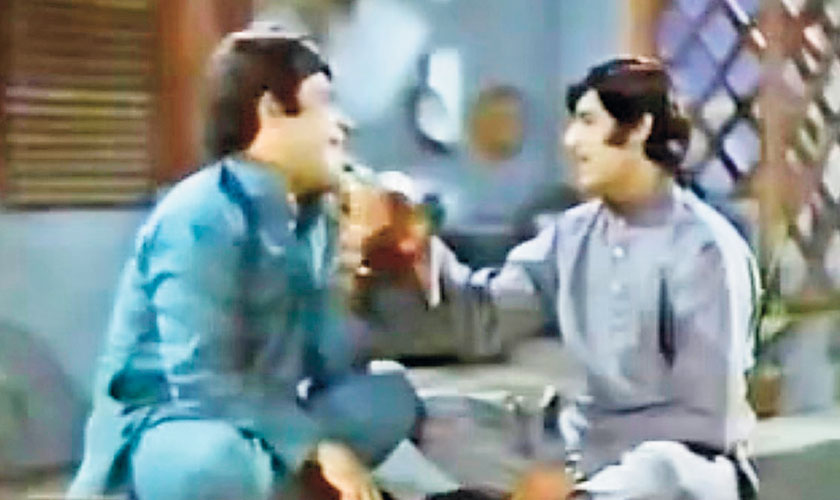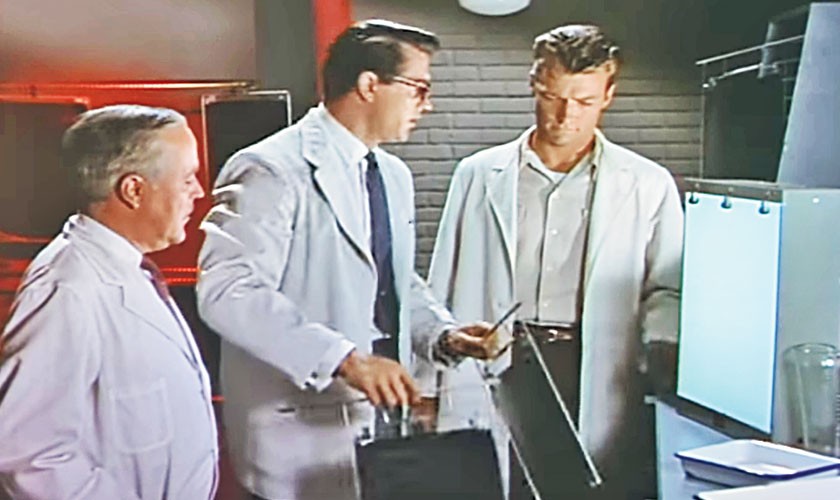They say ‘it is not in the stars to hold our destiny but in us’; we charter the path of our life and if it allows us, fame. For some stars, however, fame and fortune rested upon other peoples’ shoulders. In Hollywood, Bollywood and Lollywood there are examples of ‘accidental superstars’ who tumbled onto stardom without actually realizing it.
culturevulture
Four immensely successful superstars, who were up against the odds, but rose to incredible fame.
They say ‘it is not in the stars to hold our destiny but in us’; we charter the path of our life and if it allows us, fame. For some stars, however, fame and fortune rested upon other peoples’ shoulders. In Hollywood, Bollywood and Lollywood there are examples of ‘accidental superstars’ who tumbled onto stardom without actually realizing it.
Rock Hudson, considered the most handsome actor in Hollywood, was tall, drop dead gorgeous and attracted an audience in the 1950s. At 6’4’’ Hudson got his share of fame with movies like Magnificent Obsession (1954) and All That Heaven Allows (1955). It was during the shooting of a scene in 1955, for a movie called Never Say Goodbye, that Hudson got annoyed by a struggling actor. This extra had the role of a lab assistant but he was so tall and handsome that he immediately gave Hudson insecurities. The lab assistant was not supposed to wear prop glasses, but Hudson made sure he wore them, denying the newcomer any chance of grabbing attention. That’s not the way luck works and the ‘extra’ went on to work in Rawhide, a cowboy western TV series that led him to Italian director Sergio Leone. Leone carved ‘the man with no name’ out of ‘the extra’, by producing the famous Dollars trilogy. The term ‘Spaghetti Western’ was coined after the success of his movies Fistful of Dollars, For a Few dollars More and The Good, the Bad and the Ugly. By the end of the 60s, when Rock Hudson was no more the darling of the producers, the ‘extra’ rose to fame to became Clint Eastwood - the heartthrob of the whole world.

Over in Pakistan, the screening of Indian films was banned by the Pakistani government after the War of 1965. The film industry needed a hero and that was when 25-year-old Nazir Baig’s luck clicked. Nazir was signed as a villain in Ehtishaam’s Chakori, a film for which he had just recorded a song. Azeem, a regular in Ehtishaam and his brother Mustafeez’s films, was playing the lead. Director/Producer Ehtishaam got agitated when Azeem casually joked about the new comer’s nose and despite being a good looking actor, Azeem was replaced by Nazir. Rechristened as ‘Nadeem’, the singer became an actor and the rest is history. Chakori was a smash hit, breaking all previous records. Nadeem still acts in films and TV while Azeem got lost with the creation of Bangladesh.
Egotism also took care of Nazar, one of the most famous comedians of early days of Lollywood. Saeed, a bodybuilder-turned-moazzin-turned painter, had asked famous producer M.J.Rana for a small role in his next film. It was 1957 and Saeed’s only appearance in the film Jatti was opposite Nazar. The latter’s slapstick comedy attracted crowd and laughs but Saeed’s flamboyance was too much for him to handle. After several retakes, he started cursing the newcomer, but Saeed fetched another scene for himself due to his comic brilliance. As a waiter, he had to read out the ‘menu’ to Zarif, another star comedian of the 50s. Saeed improvised and added Maa ki daal and Piyo ki Bhaaji to the menu, leaving the great Zarif laughing. Zarif applauded the actor and praised Rana sahab at the discovery. Jatti was released in 1958, with a brief appearance of Saeed Khan. Zarif died in 1960, passing the baton to his younger brother Munawwar while Saeed, after several years of struggle, established himself as ‘Rangeela’ by 1965. Rangeela and Munawwar Zarif gave Pakistan some of the best of comedy films of that era: Parday Mein Rehnay Do, Sacha Jhoota and none other than the crazy Rangeela aur Munawwar Zareef in 1973.
In India the story of Amit Srivastav - who was trying hard to establish himself as an actor by late 60s - is even more surprising. All India Radio found his voice ‘unfit’ for broadcast while Bollywood rejected him due to his ‘tall’ frame. He changed his name and took on his father’s takhallus as his surname. He got due recognition after starring as Doctor Bhaskar Banerjee in Hrishikesh Mukherjee’s Anand (1971). Amitabh Bachchan stepped on the first stair to stardom, but it meant he had to overthrow Rajesh Khanna, his co-star in Anand. It wasn’t easy, especially because Khanna gave Bachchan a tough time. Rajesh Khanna, on the sets of Bawarchi, called Amitabh manhoos because he had delivered a handful of flops.

Khanna and Amitabh were brought together again by Hrishida in Namak Haraam in 1973. Prakash Mehra’s Zanjeer was in production, and Amitabh was not yet ‘the angry young man’. Khanna, afraid of the Bachchan wave, had his favourite R.D.Burman signed as music director in Namak Haram, had all songs filmed on him, got the powerful scenes and cashed on his ‘death wish’. It was believed that a film cannot bomb at box office if Rajesh Khanna dies in it. But despite all hindrances, Amitabh made his presence felt with his dynamic performance, making Namak Haraam a hit. Bachchan was the new sensation, his voice is now emulated all around the world and his style literally ‘killed’ Rajesh Khanna in the late 70s.
There is absolutely no connection between the stories of these four legends. They were from different backgrounds and were tested in different times. The only connection they have is that they proved their opponents and critics wrong. It wouldn’t be wrong to play that destiny played a role in creating these stars who may actually never have realized the magnitude of their success.